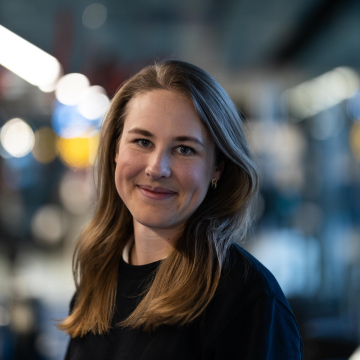A product’s footprint history starts with design. We choose low footprint materials and finishing processes. By constructing and designing long-lasting quality and expression, we limit a product’s footprint per usage. Our design and product development guidelines have been aligned with our sustainability goals for years, leaving no room for sourcing of non-sustainable, conventional materials.
We always consider durability, repairability, recyclability, versatility, and timeless design for a reduction of fashion seasons.
Until we can say that a material or a process is in fact 100% sustainable, Björn Borg uses the terms ‘more sustainable’ or ‘better choice’. Our qualification for a more sustainable product is that it is either made of a minimum of 70% more sustainable material than conventional ones, or that it supports Better Cotton’s mission.
All Björn Borg clothing is now ‘more sustainable’ according to this definition, and our goal is to reach 75% more sustainable bags by 2025 (by 2022: 33%). In 2022, 51% of our shoes contained more sustainable material and 69% of the material weight in our total clothing and bags production was more sustainably sourced.
Animal Welfare
Björn Borg’s demands for animal derived products are based on the five freedoms for animals created by the World Organisation For Animal Health.
- Freedom from hunger and thirst
- Freedom from discomfort
- Freedom from pain, injury and disease
- Freedom to express normal behavior
- Freedom from fear and distress
Wool: All wool must be from non-mulesed sheep.
Leather: Leather that is used in production of Björn Borg products should originate from animals that have been bred for food industry, and not just for the sake of the skin.
Down: Björn Borg does not accept live plucking of birds. Down and feathers that are used in production of Björn Borg products shall be from birds that have been bred for food industry and not just for the sake of the down/feathers. All virgin down and feathers used by Björn Borg must come from farms certified to RDS or to a similar standard.
Consumer Dialogue
Being in direct contact with consumers is critical and our stores, social media channels, web, packaging, and newsletters are key platforms for this dialogue. Our young and urban target group is social and environmentally conscious, and the interaction gives us plenty of valuable feedback and inspiration. People listen to people which makes social media important to the brand. Through social media, influencers help us communicate our story and our mission: to inspire people to use training to become the best version of themselves, may it be your mind, soul, or body.
In 2022, we increased the communication around a more sustainable lifestyle in our social channels. We aim to inform customers on how they can decrease the environmental impact of their product through reducing, reusing, and recycling. Björn Borg commits to responsible marketing in social factors like diversity, equality, inclusion, and health. We adhere to the Swedish Fashion Ethical Charter which advocates a healthy body image. We avoid digital manipulation to create unrealistic body and beauty ideals and exclude models with a very low Body Mass Index. Instead, our models must be athletic and healthy. Influencers we collaborate with clearly inform about the collaboration when posting about our products. Communication from Björn Borg should never be judged as offensive based on currently prevailing standards of decency.
During the year, we have developed green claims guidelines for truthful, transparent, reliable, comparable, verifiable, and precise climate communication. We are committed to not make any unsubstantiated product claims.
Read more about the handling of water, chemicals, and waste in our sustainability report.

